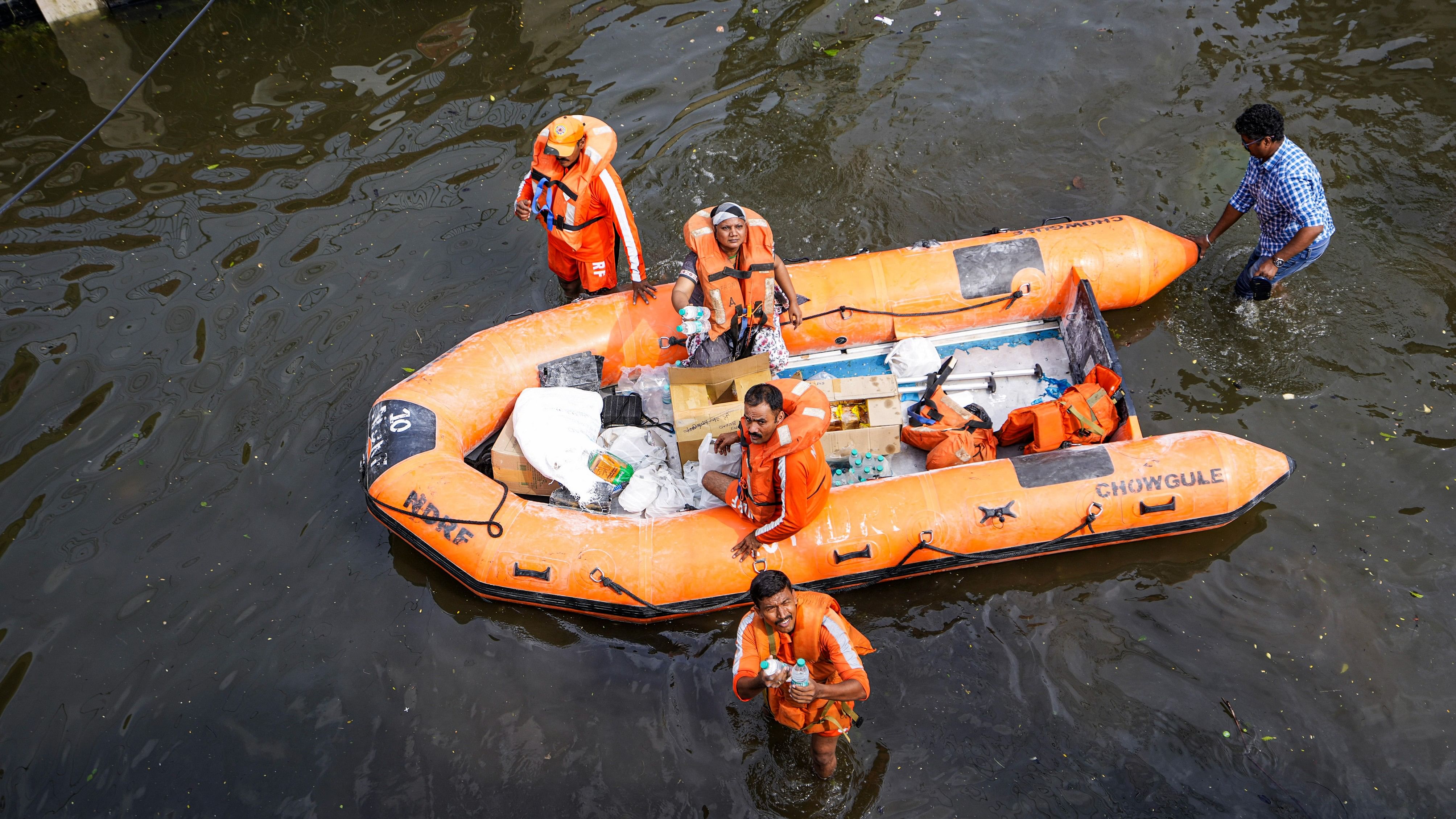
NDRF personnel in action. Representative image.
Credit: PTI Photo
Nearly two decades after Disaster Management (DM) Act 2005 came into force, state governments are in no position to address the challenges even as climate change has led to an increase in the frequency of disasters, which has forced Karnataka to wake up to the idea of mitigation.
Karnataka Natural Disaster Monitoring Centre (KSNDMC), set up in 1988, is known for its early warning system (EWS) infrastructure and expertise. The establishment’s focus, however, has been limited to monitoring weather phenomena like drought, flood, and lightning.
The DM Act, on the other hand, provides for the State Disaster Management Authority (SDMA) which has a broader scope of prevention, mitigation (reduction) of risk, capacity building, preparedness, prompt response, rescue and relief as well as rehabilitation and reconstruction.
That Karnataka failed to learn from the 2009 flood disaster -- which claimed 139 people and caused losses to the tune of Rs 10,000 crore -- became clear during the 2018 landslides in Kodagu. On the other hand, the state is witnessing frequent droughts with higher intensity pushing farmers into distress.
"Capacity building, clarity in role and responsibility, and a robust emergency response system as well as a project management unit are core areas of SDMA that remained unaddressed. The resulting vacuum forced officials to adopt ad-hoc measures during disaster situations. Unfortunately, this is not unique to Karnataka," an expert who has worked with several states told DH.
“All that is set to change”, said Rashmi V Mahesh, Principal Secretary to the Revenue Department (Disaster Management, Bhoomi and UPOR). She referred to the Cabinet decision on December 7 to approve a proposal for a multi-sectoral disaster and climate resilience project.
“It's a Rs 5000 crore work of which 30% will come from the state government and the rest is loan from the World Bank. We want to integrate and mainstream the issues of climate change into DM. We have taken note of the gaps that exist in SDMA,” she said, adding that several projects - from drought to urban flooding – will also take off as soon as the Centre approves them.
At present, Karnataka's SDMA functions from a small room in the MS Building. As per the rule, the authority has the chief minister as the chairperson. Nine of his cabinet colleagues representing agriculture, health, panchayat raj, housing and other departments are members. On the executive side, there are only about 12 staff, most of them from the revenue department with no expertise, to look into the multiple and diverse issues surrounding DM.
Rashmi said the World Bank project seeks to address the concerns. “From effective implementation of EWS to coordination, capacity building and mitigation measures, the project will also help optimise KSNDMC and the SDMA. We are exploring the possibility of co-locating the two organisations so that they can draw upon each other while dealing with the diverse challenges,” she added.
Under the 15th Finance Commission, Karnataka is eligible to get about Rs 5,800 crore for five years. As per the commission’s recommendation, states should spend Rs 350 crore per year on capacity building and mitigation measures. However, except for a handful, many states have yet to look beyond relief efforts. "A comprehensive DM system has remained a far cry as states are limiting themselves to sector-specific actions. Micro-level plans that consider the climate change risks are needed," the expert said.